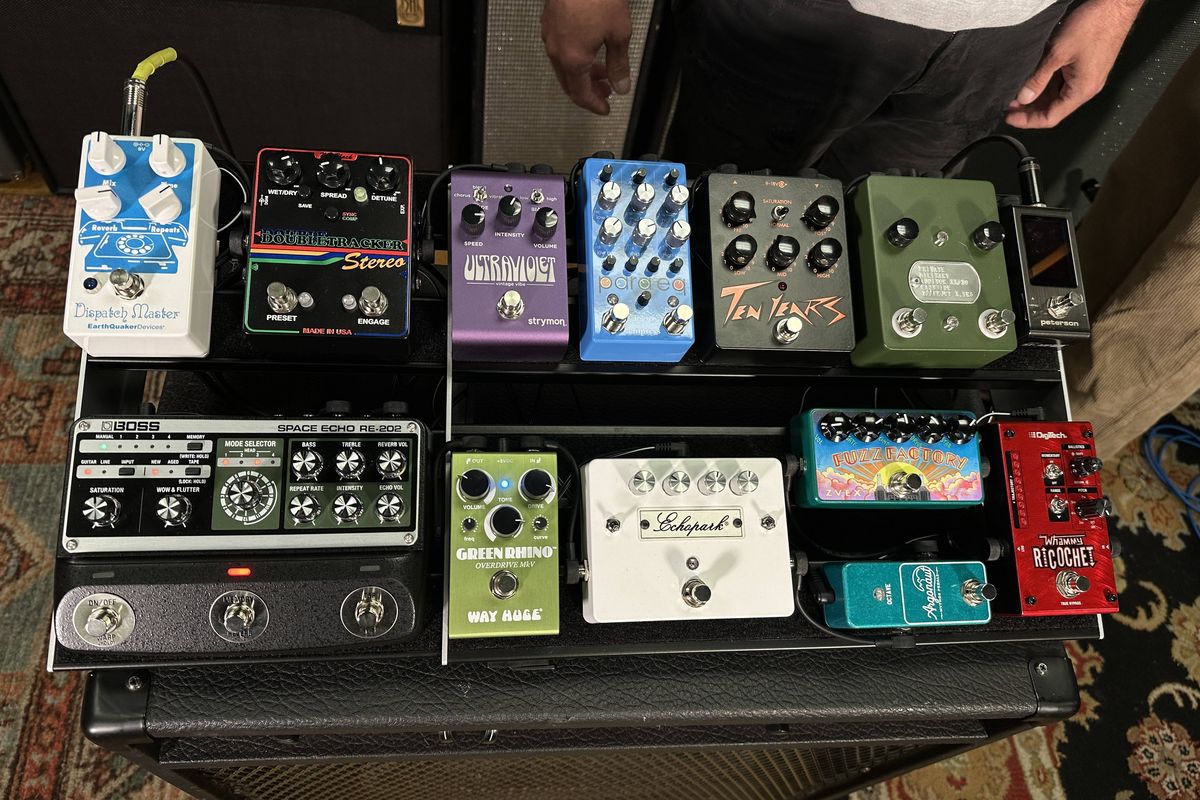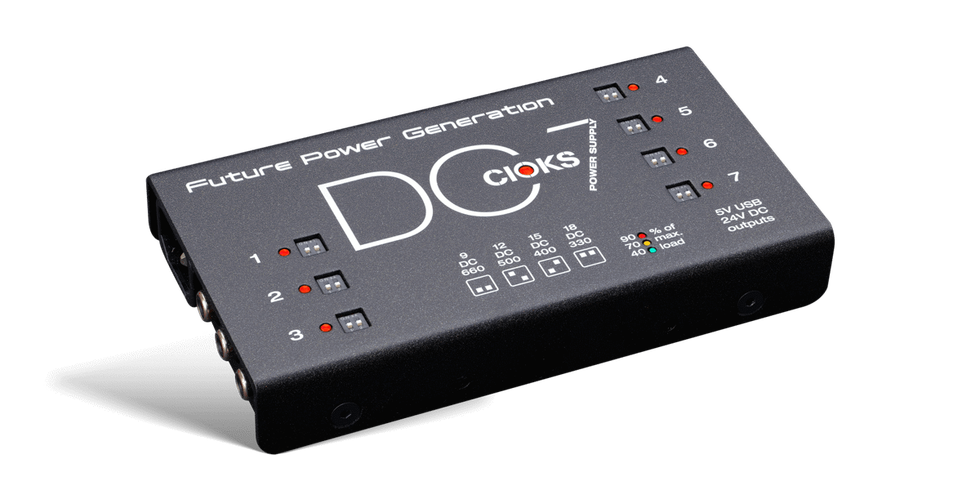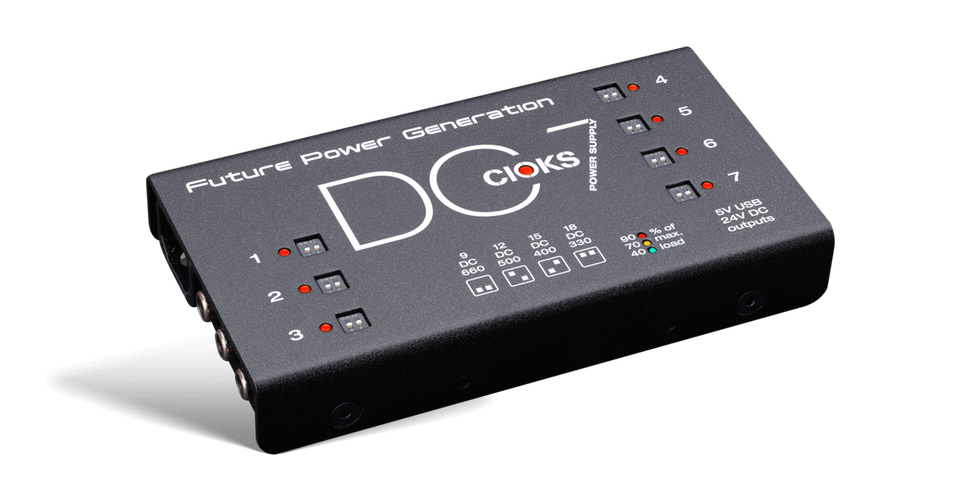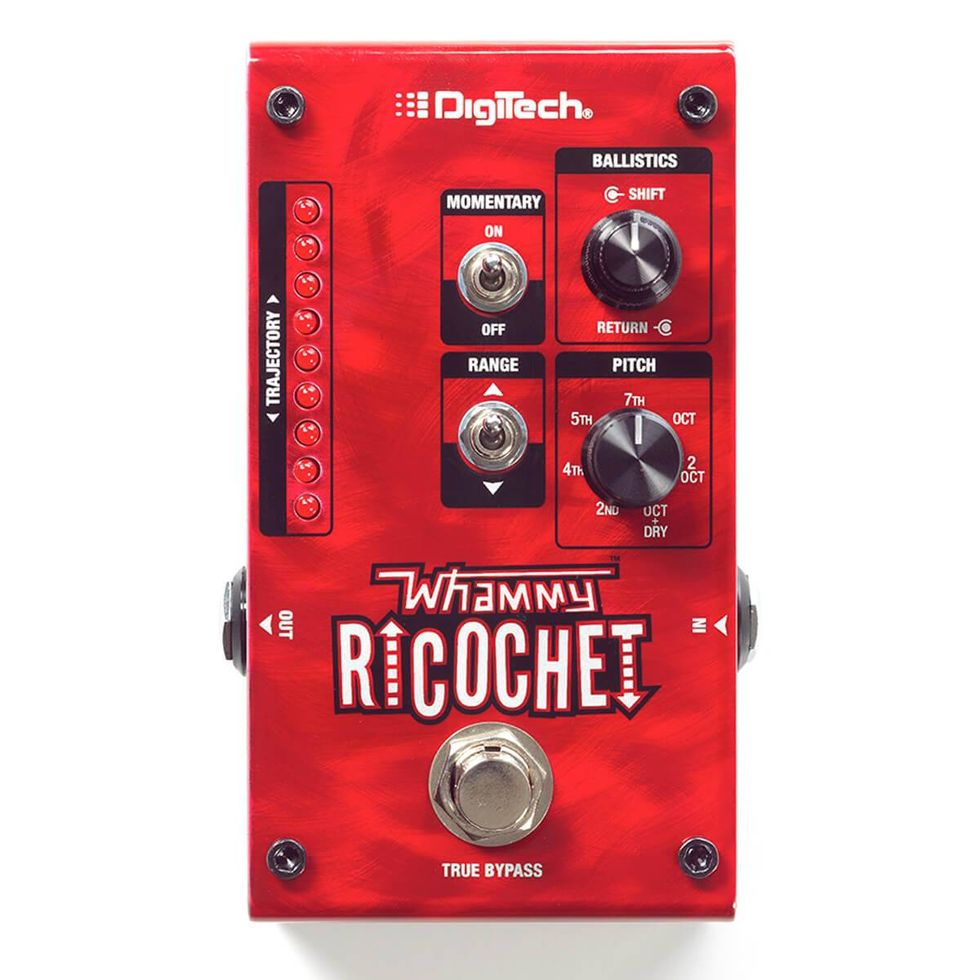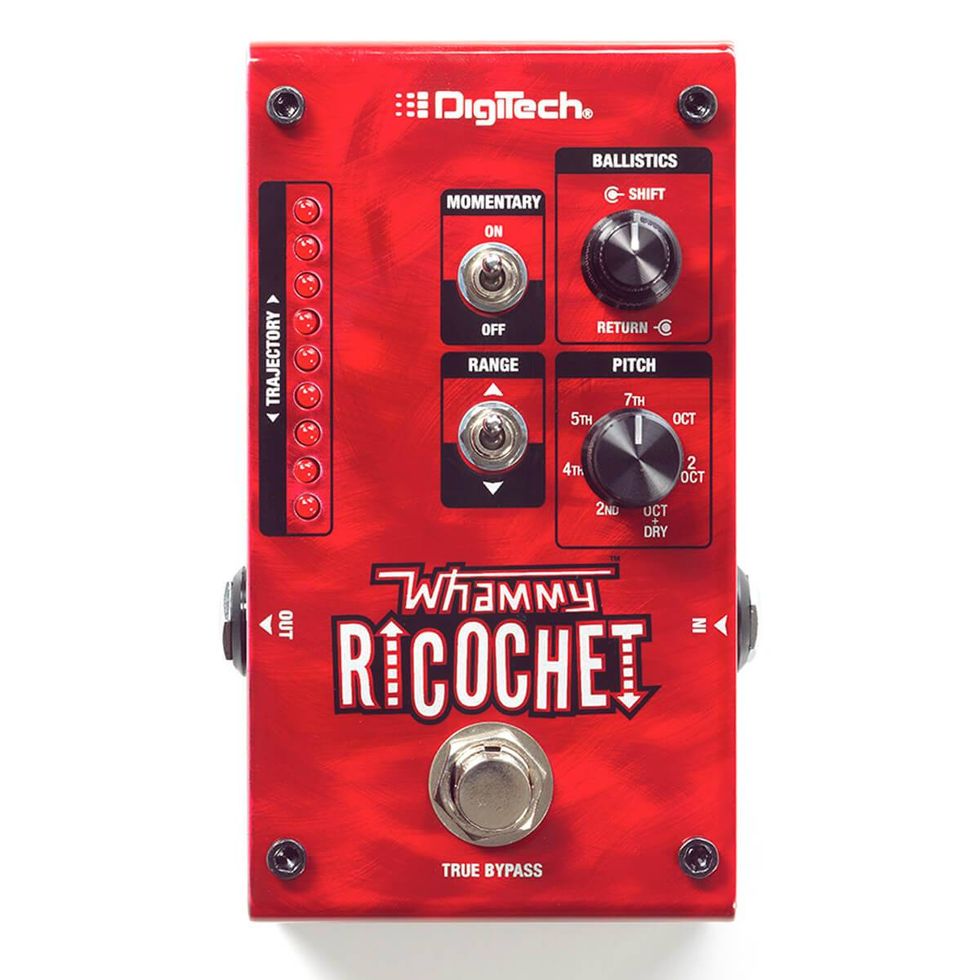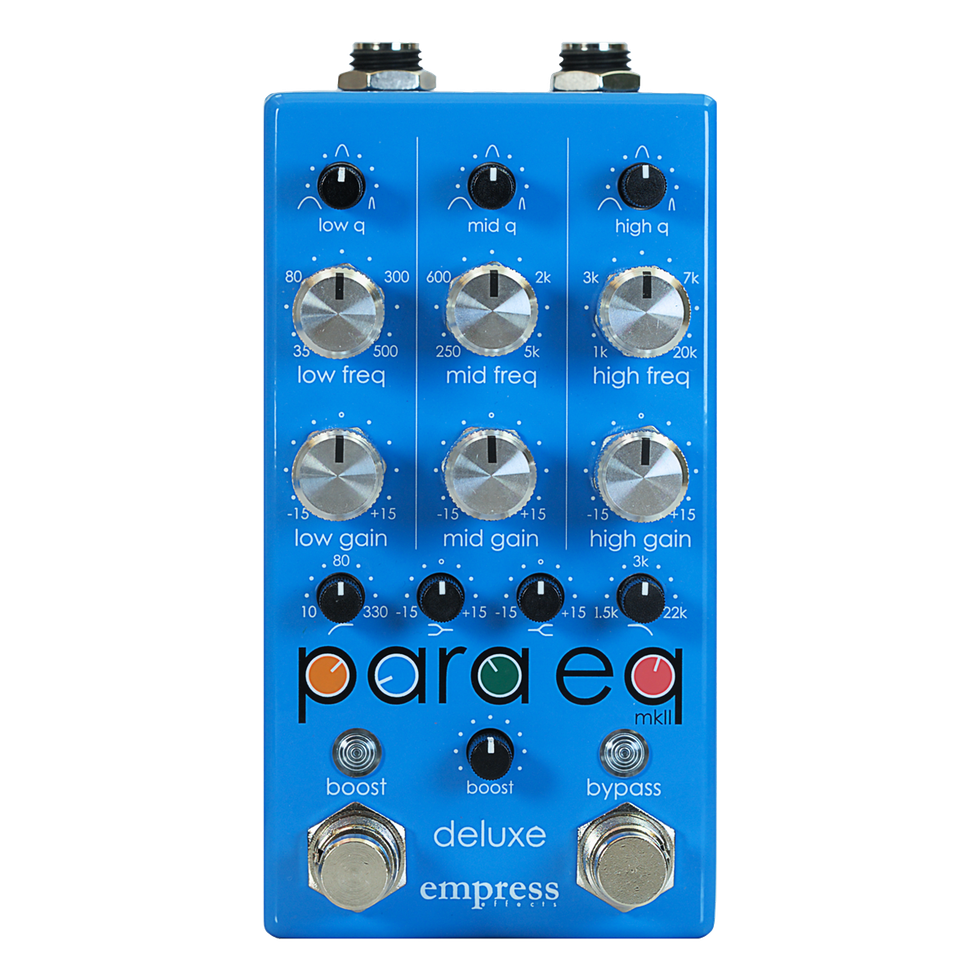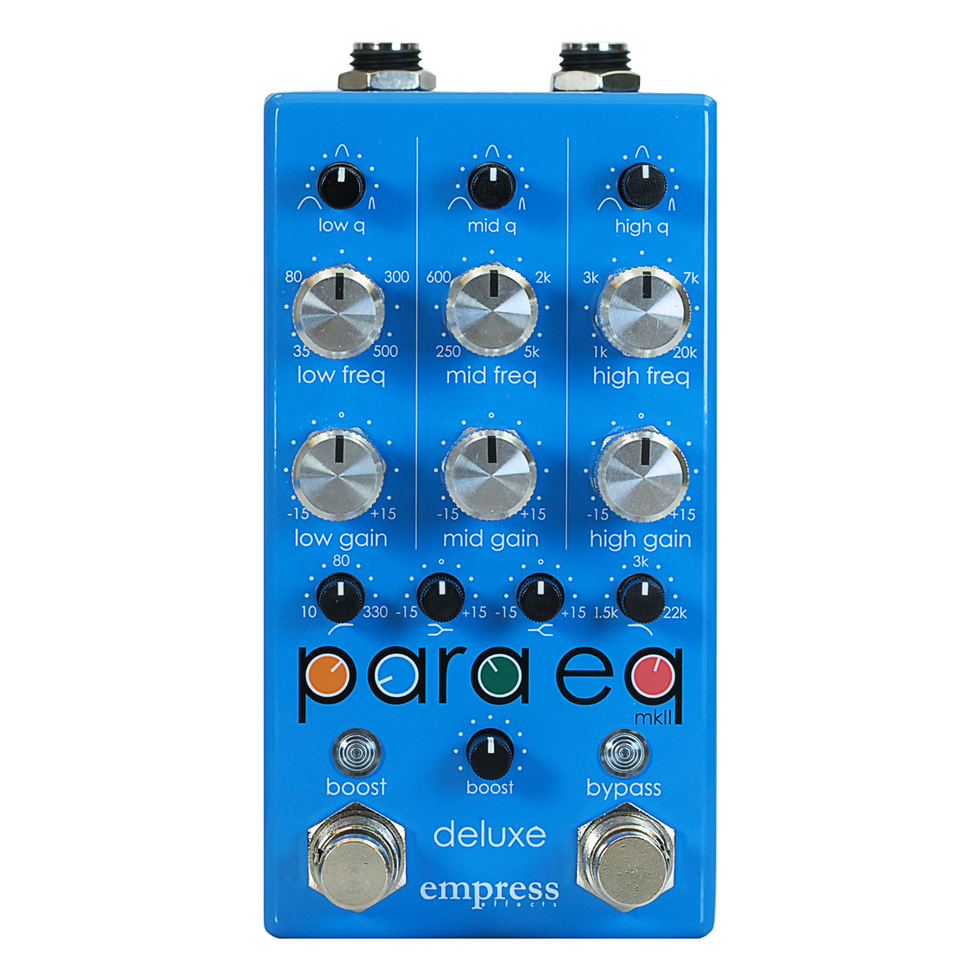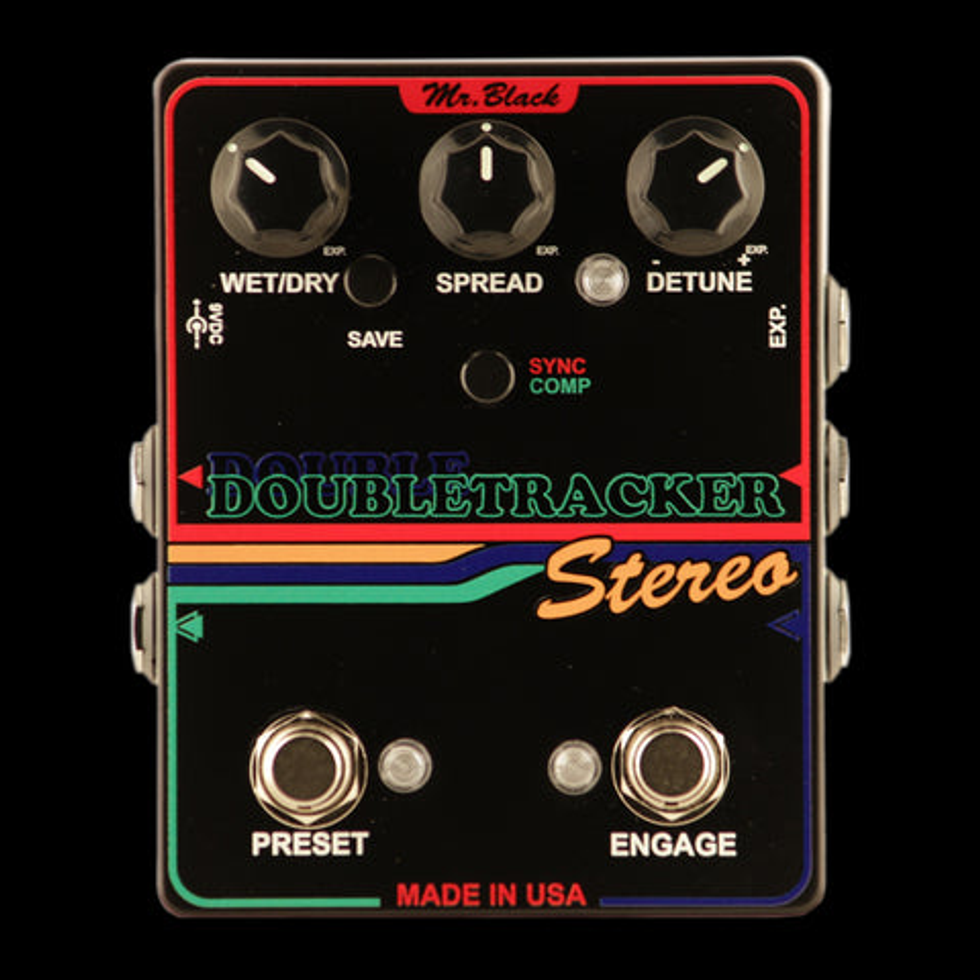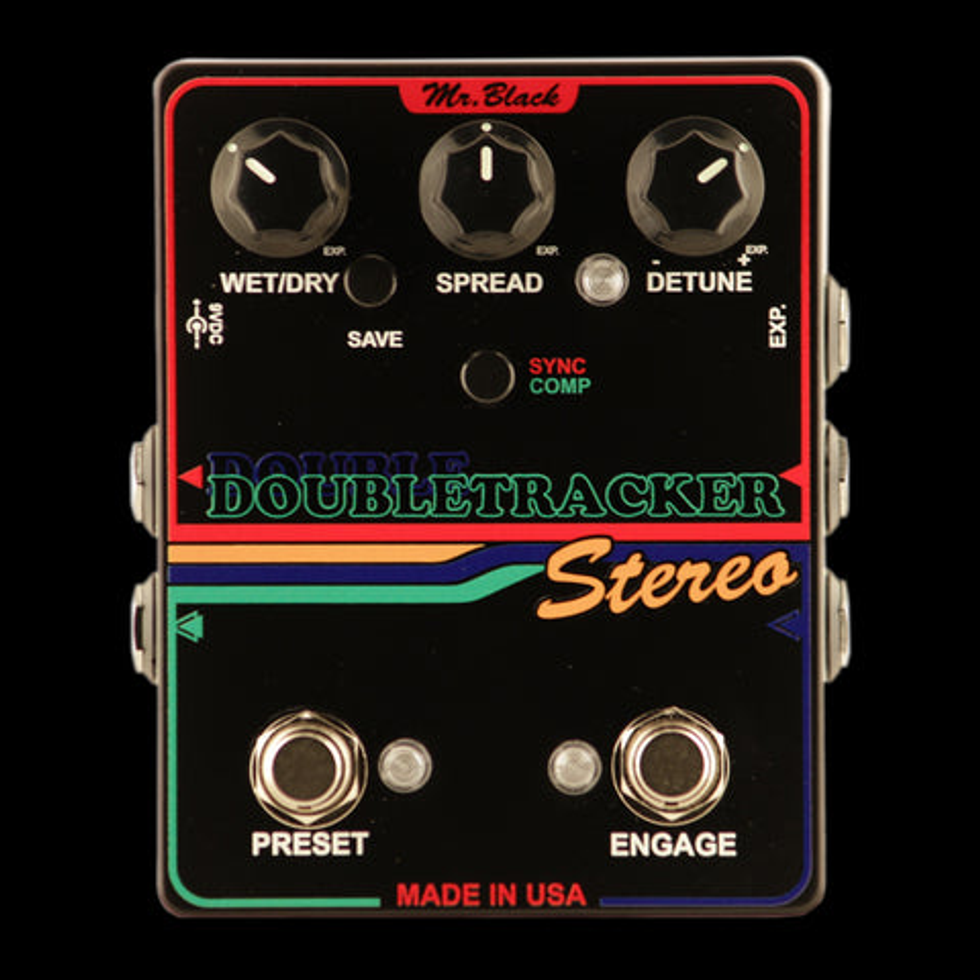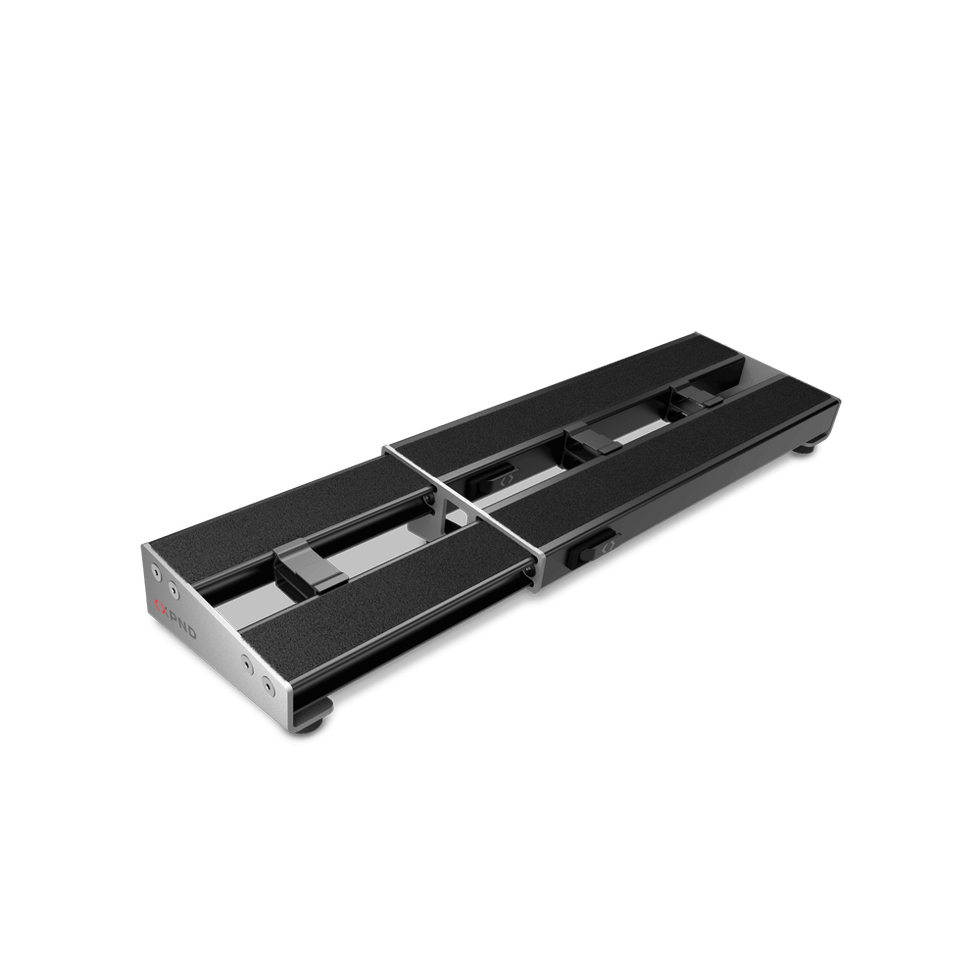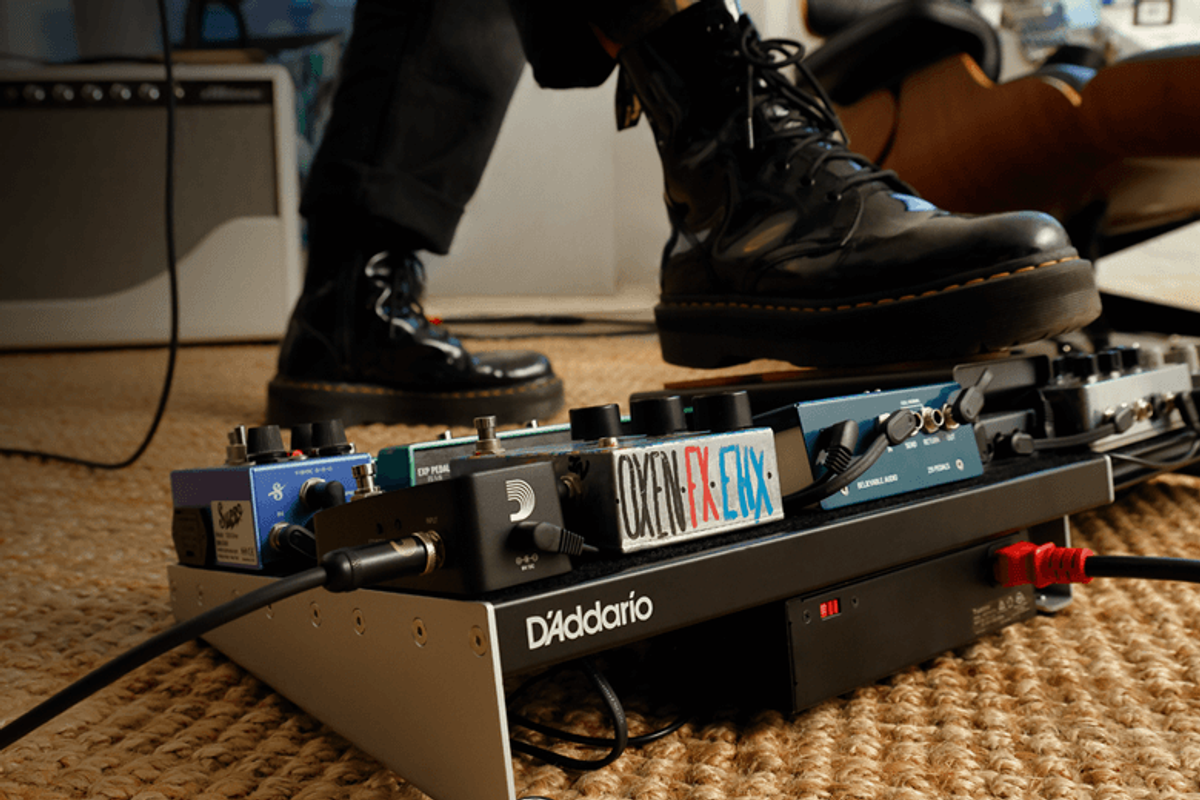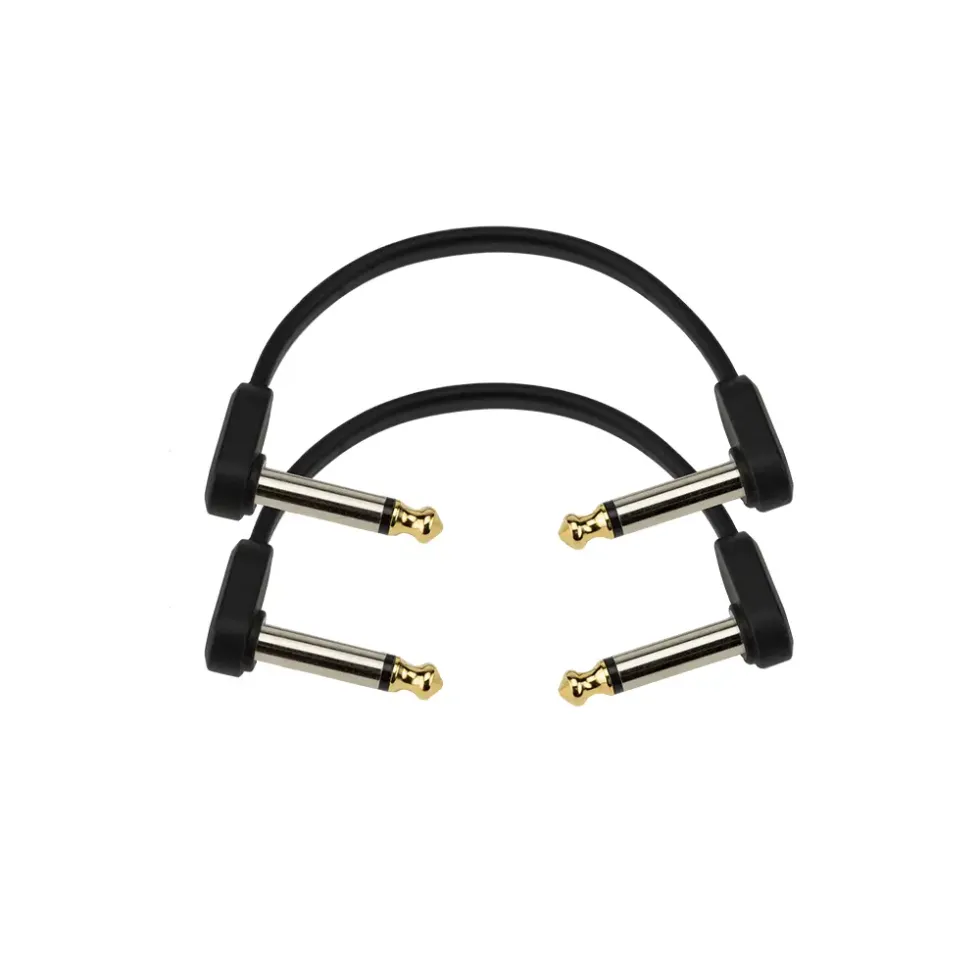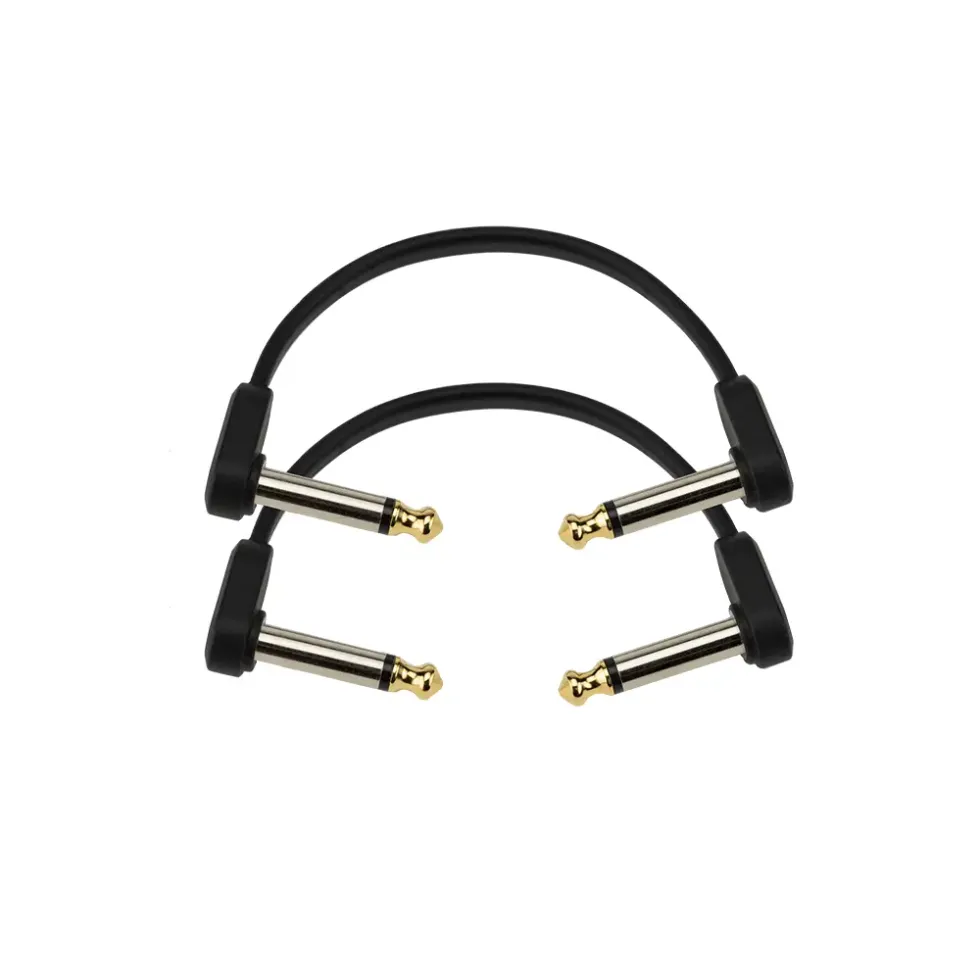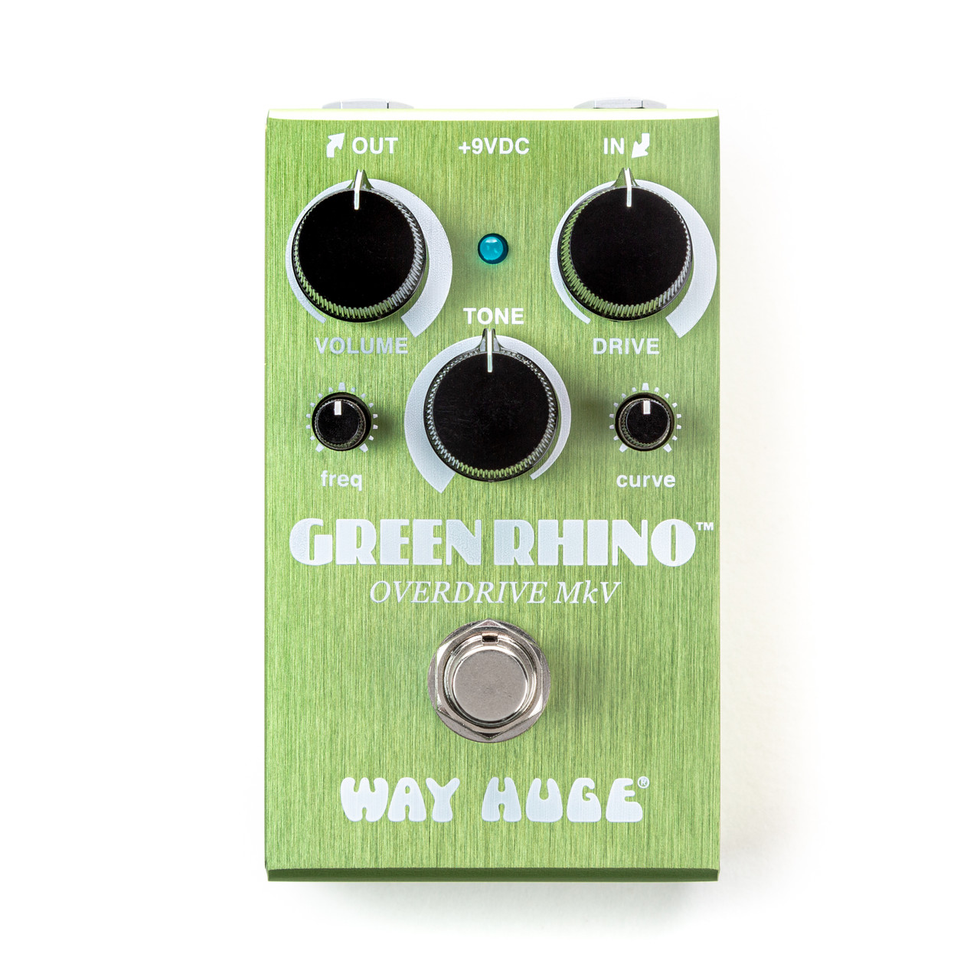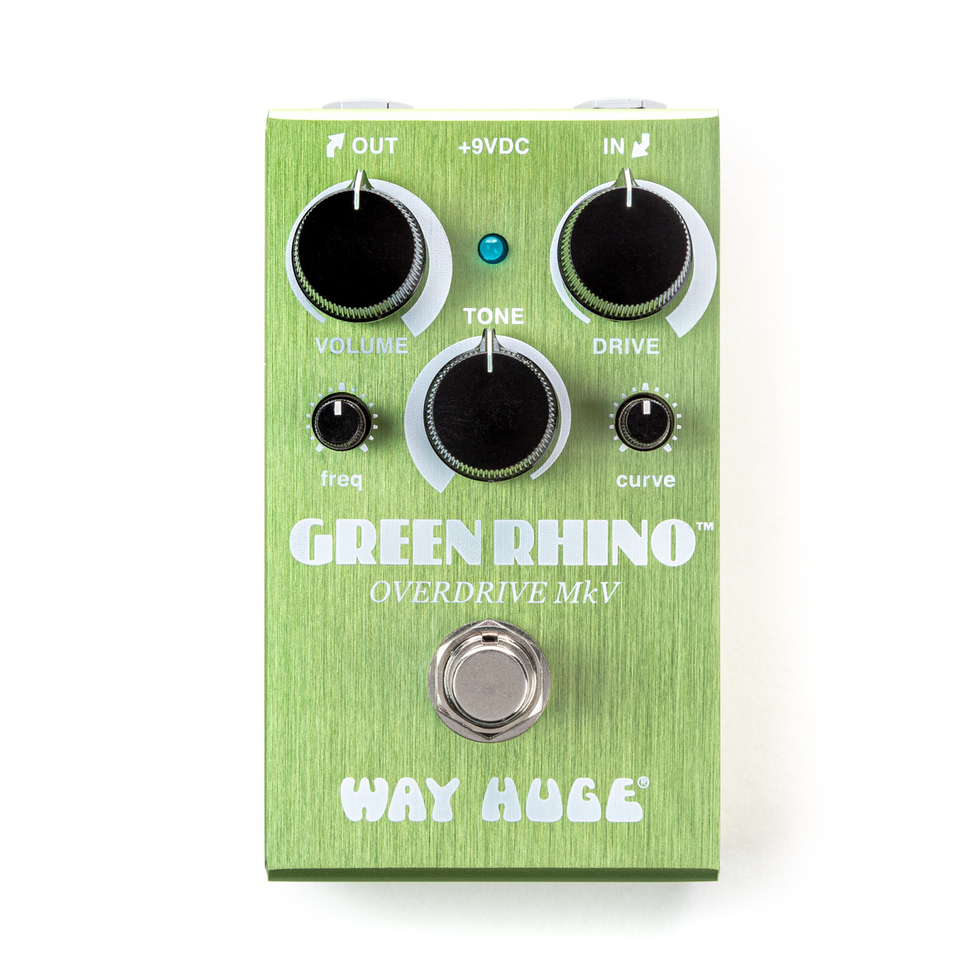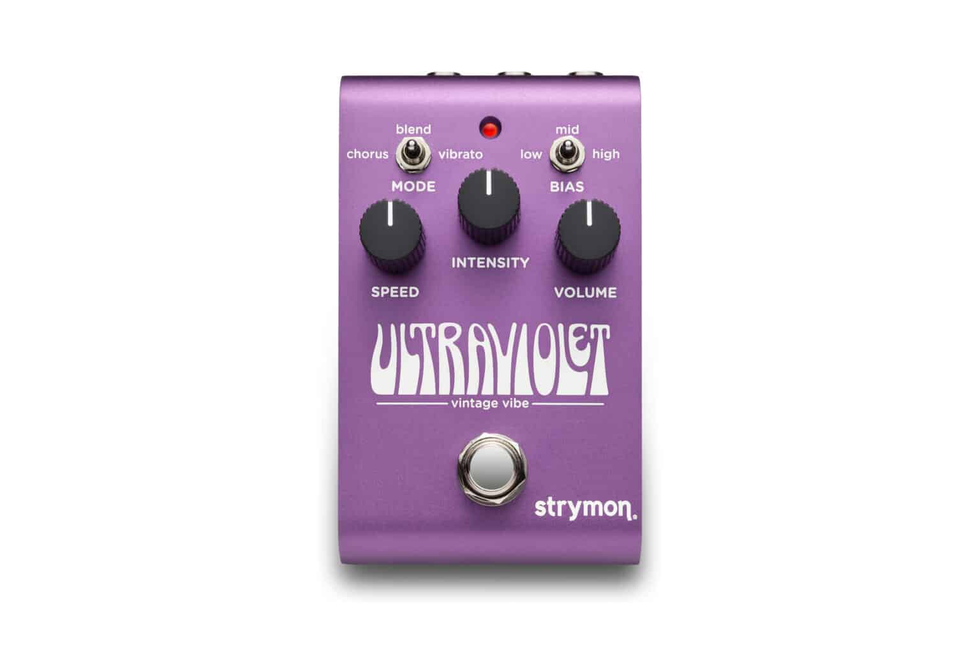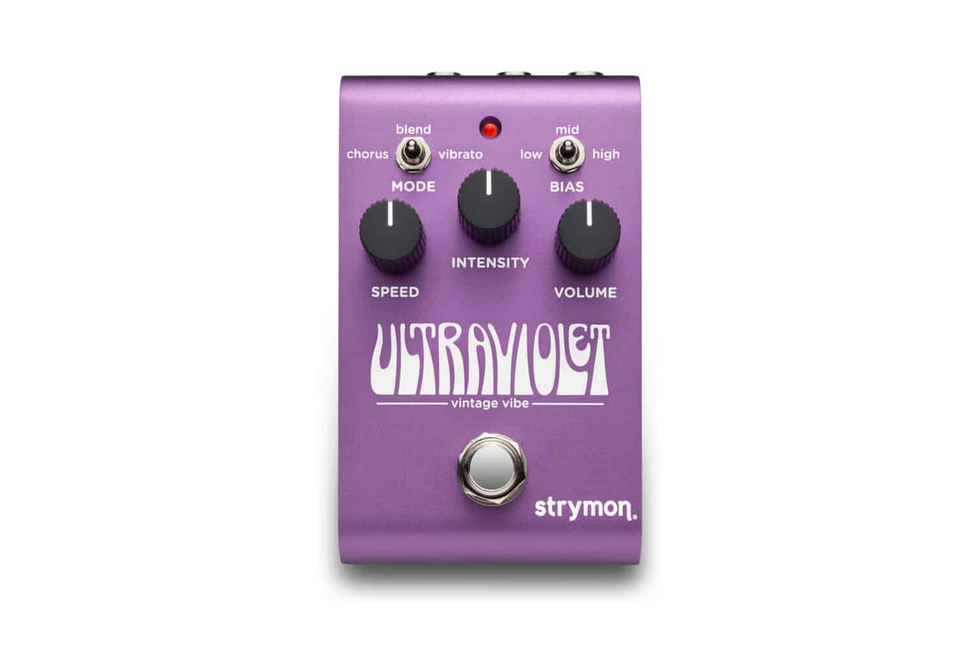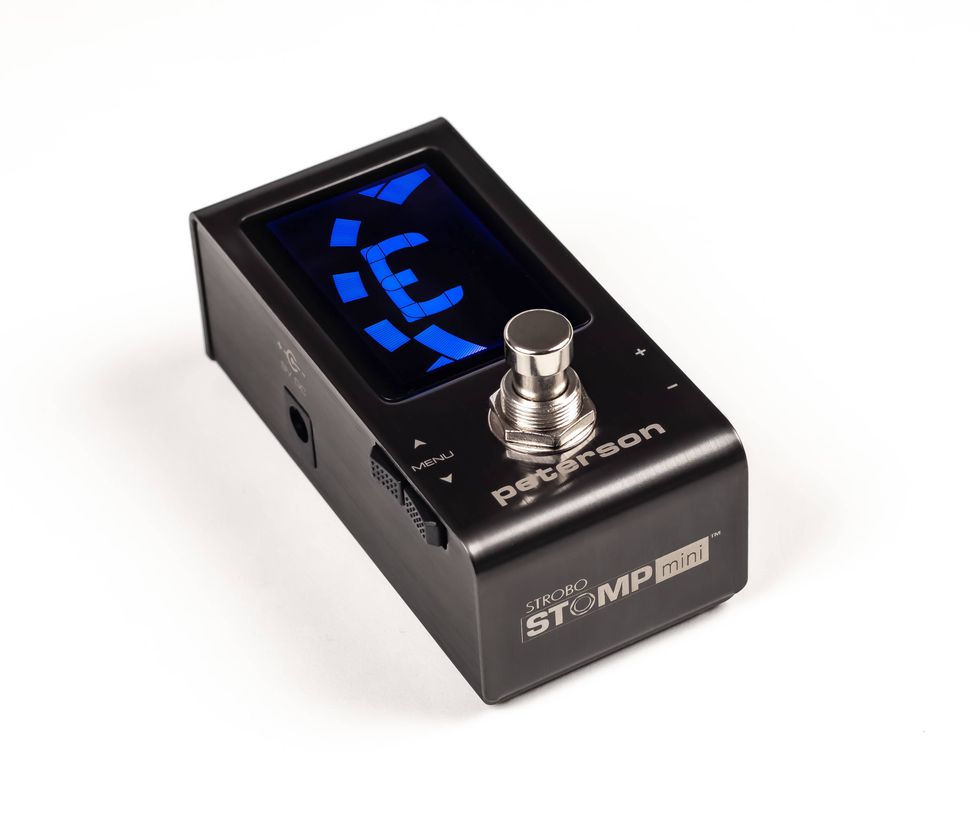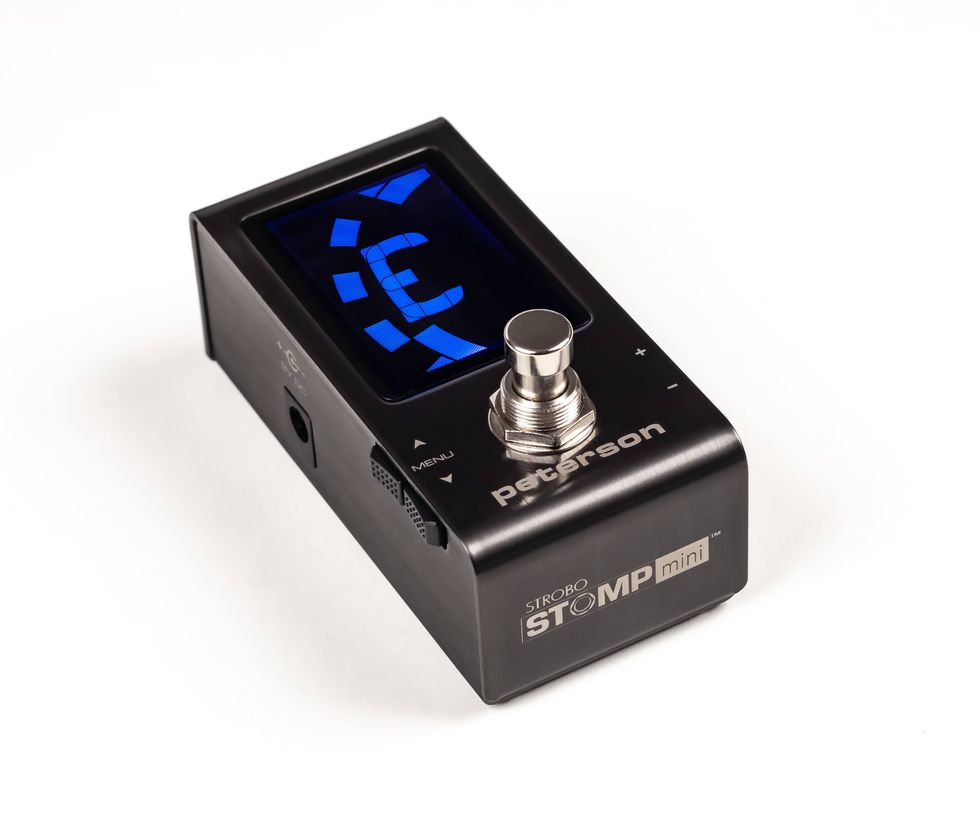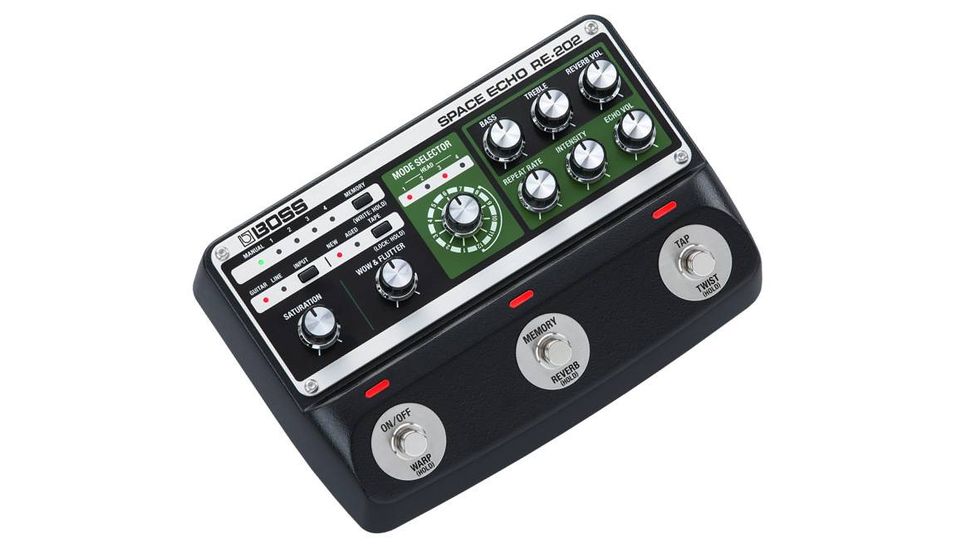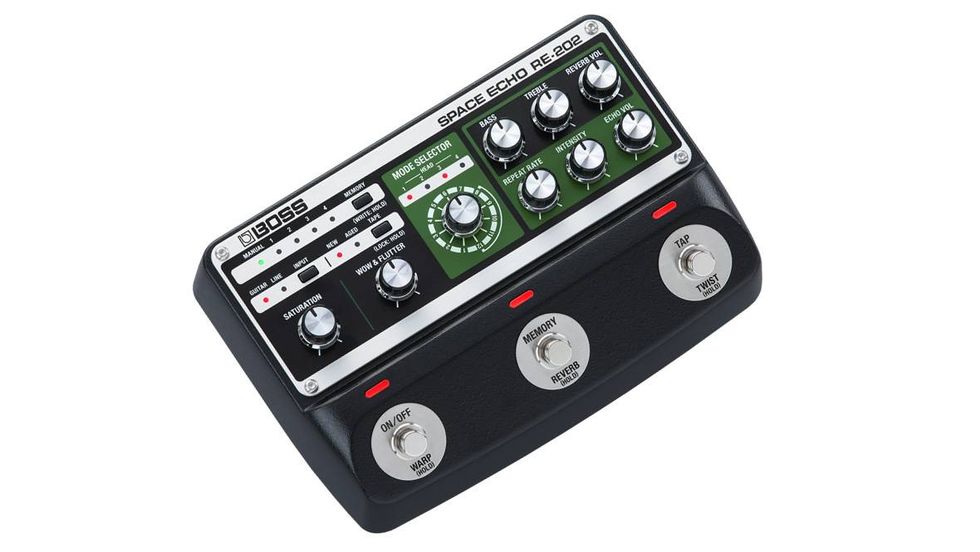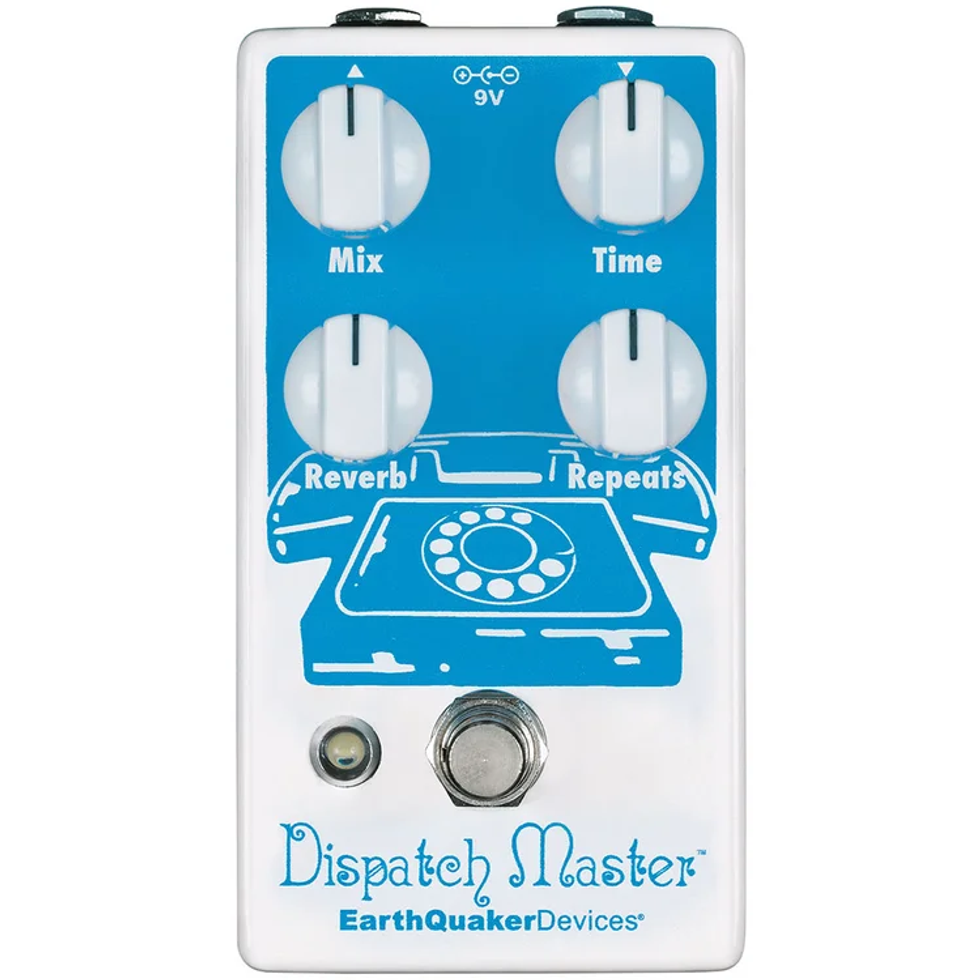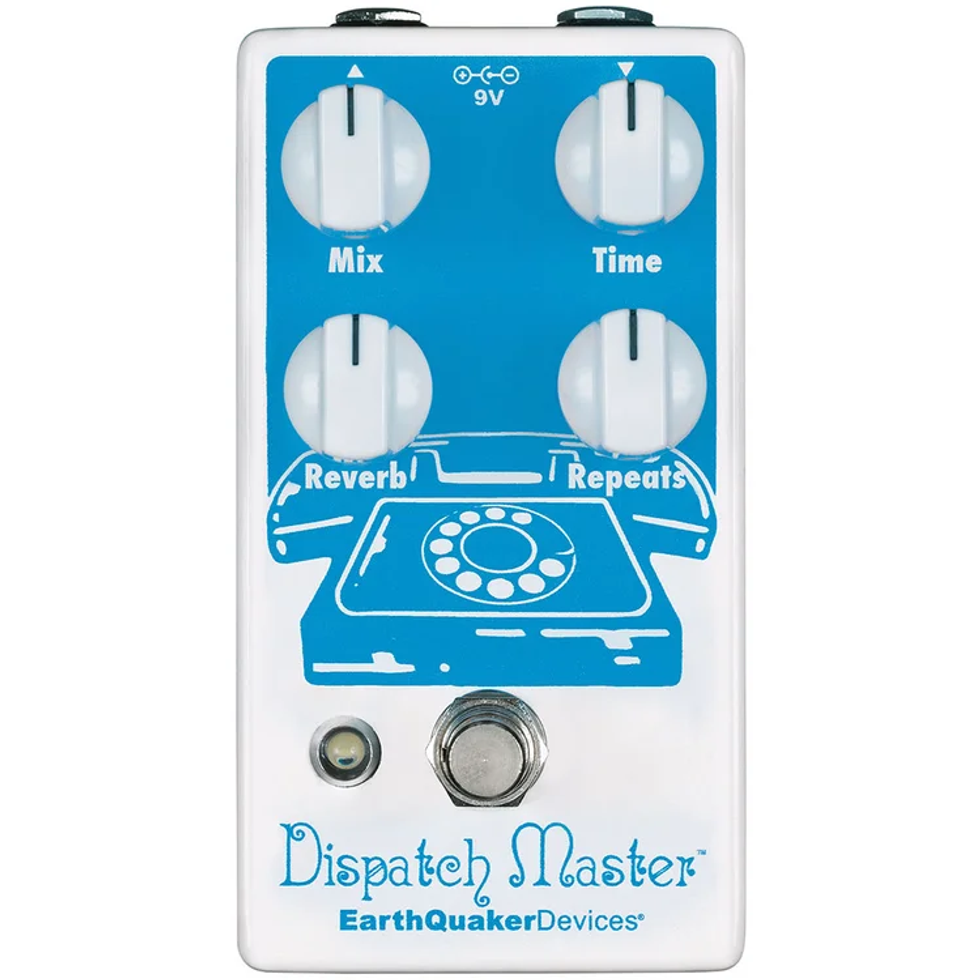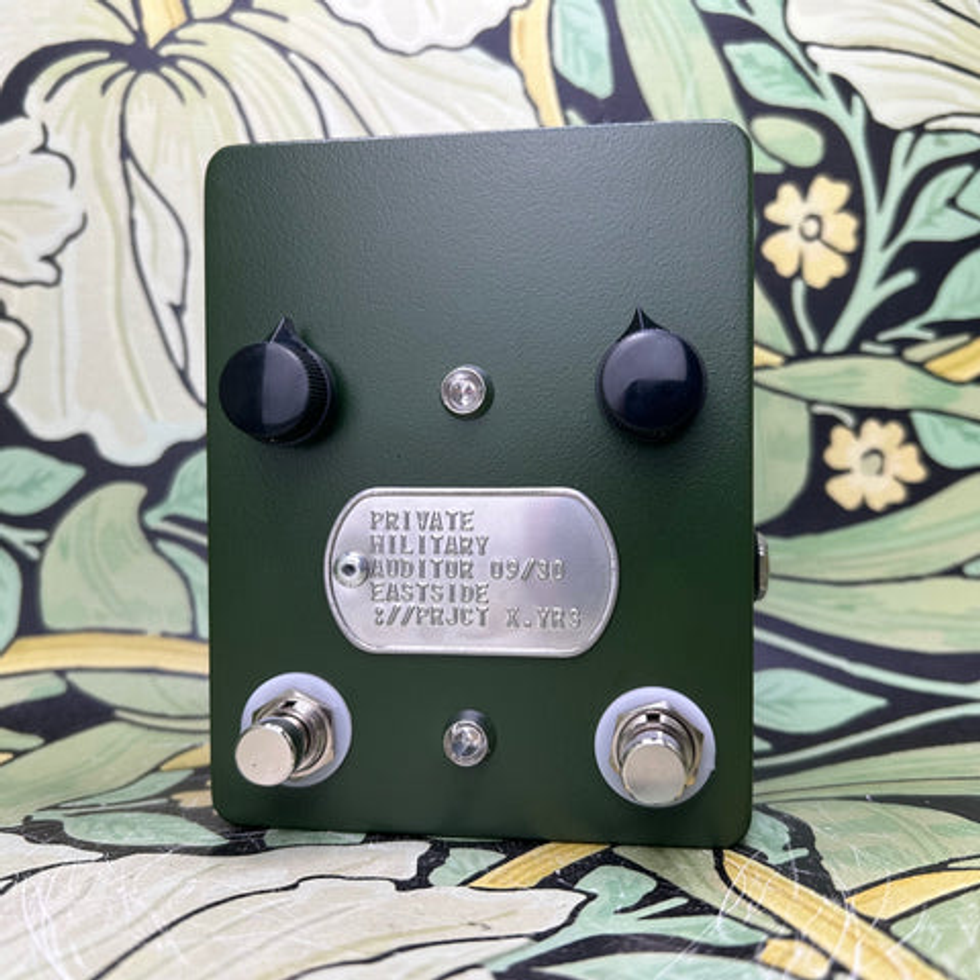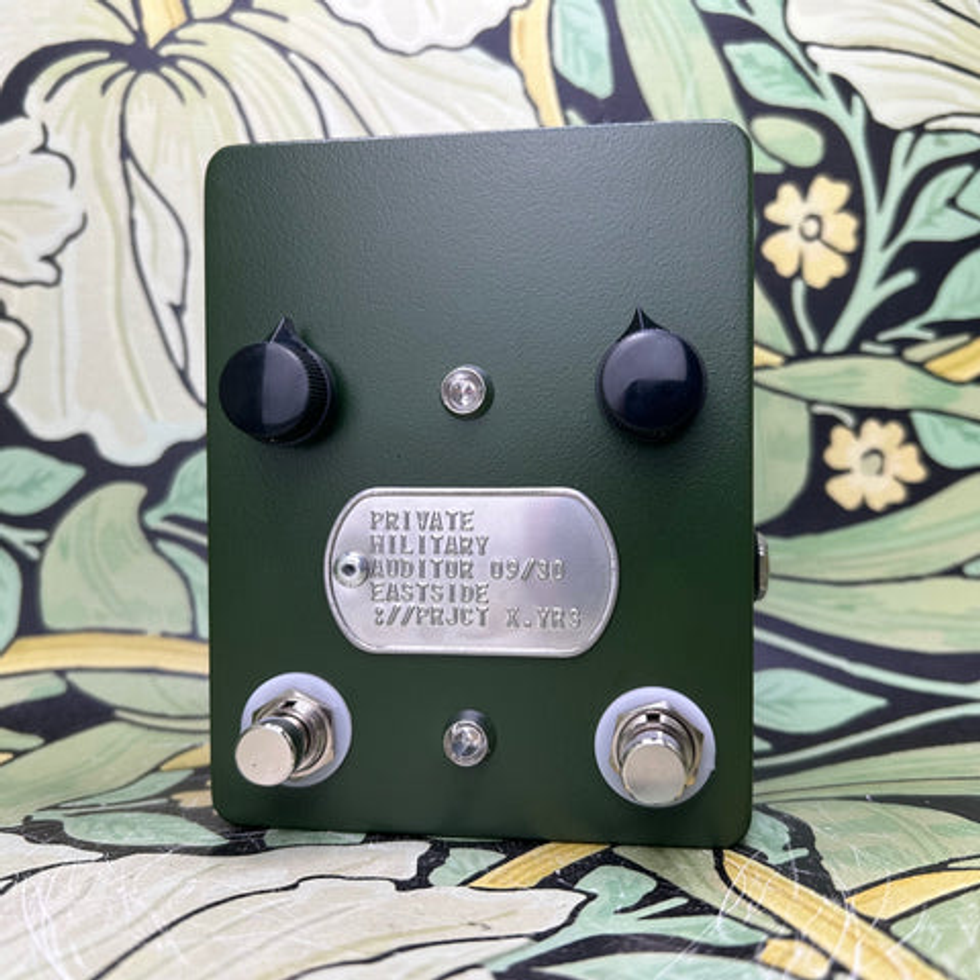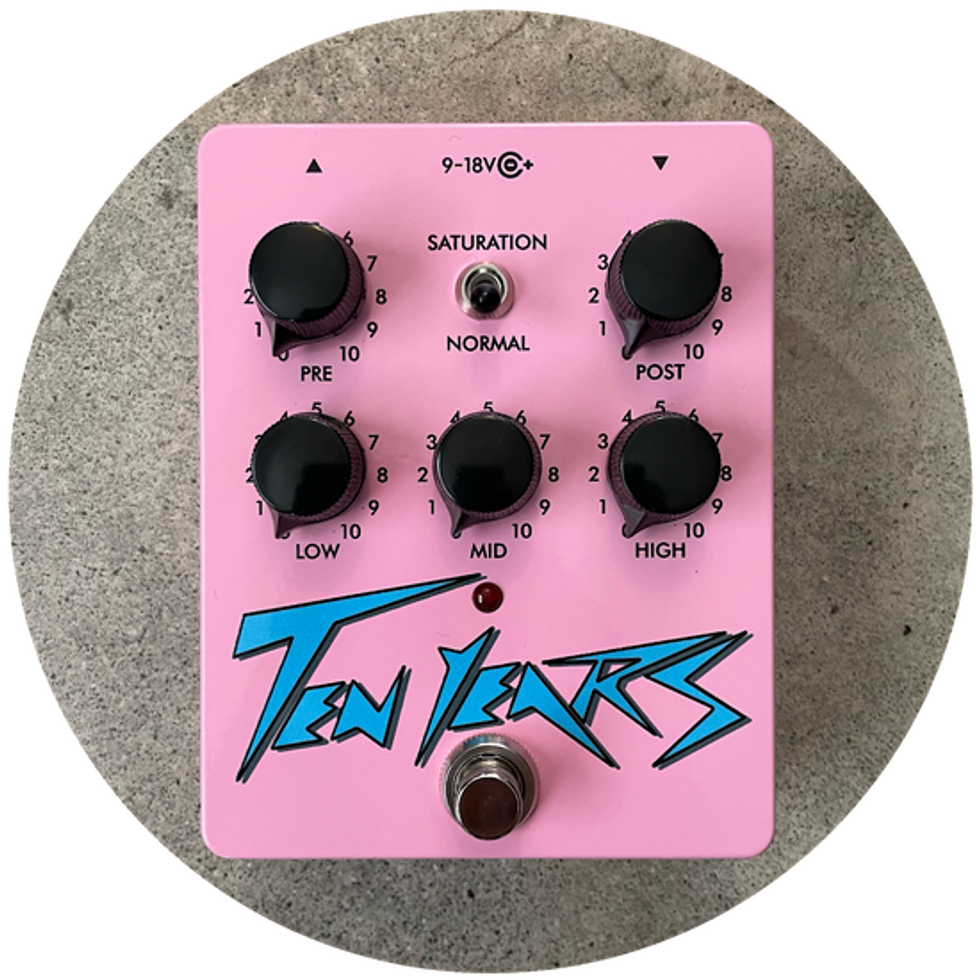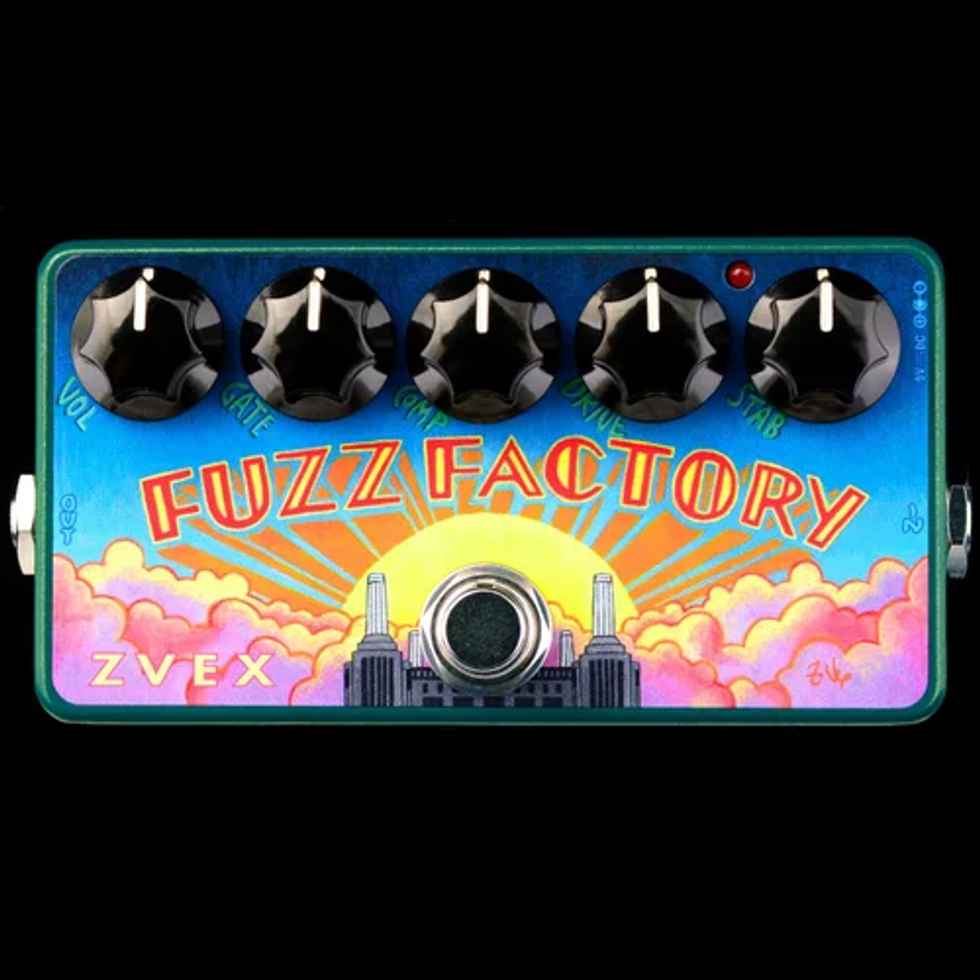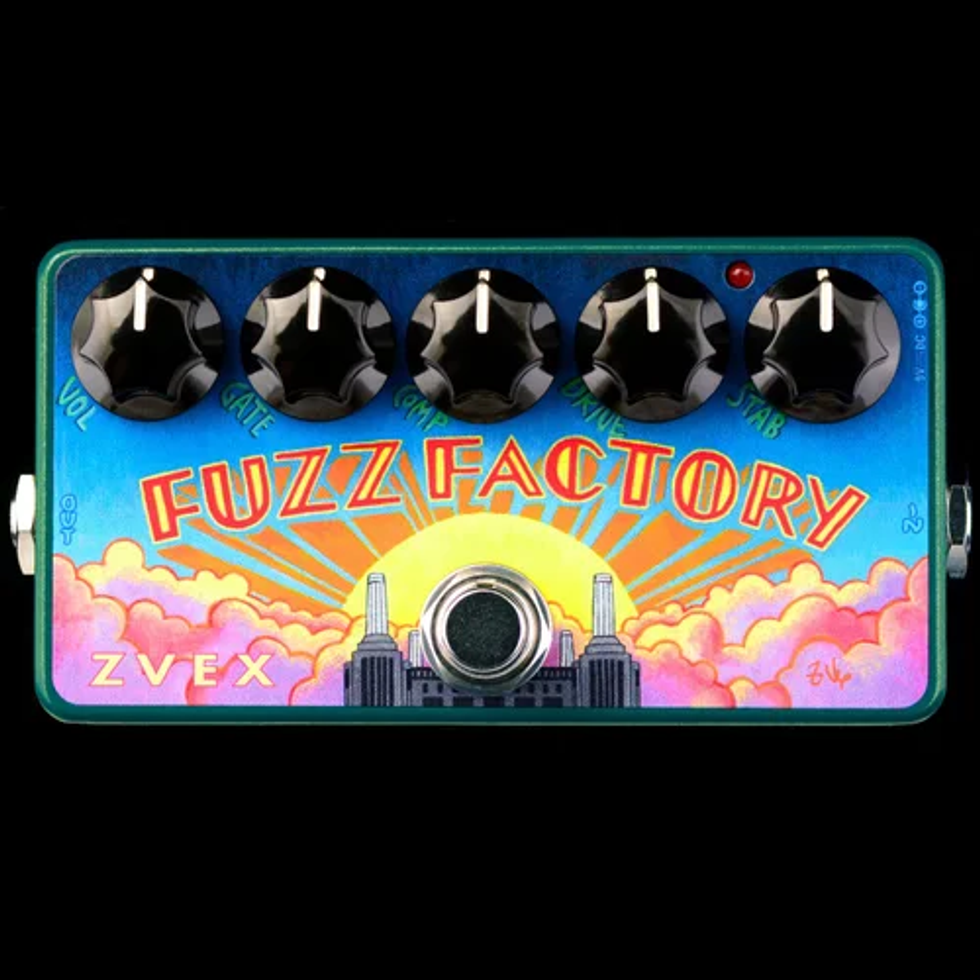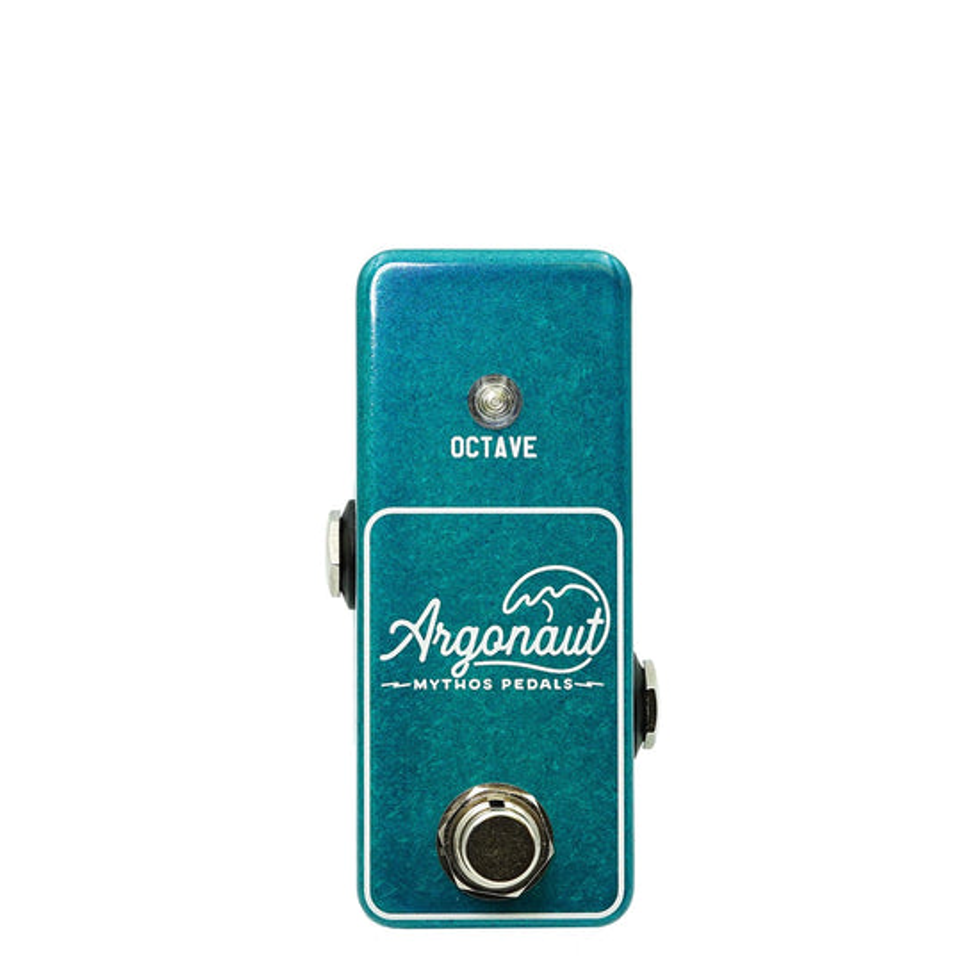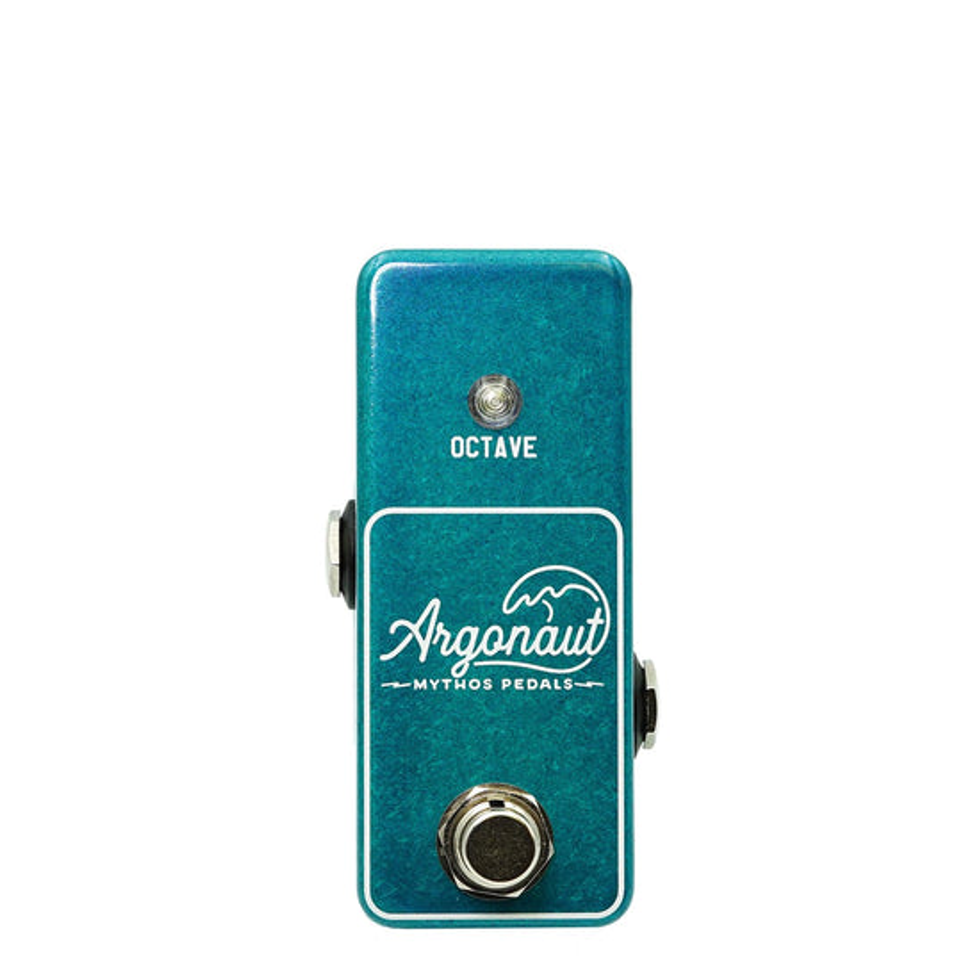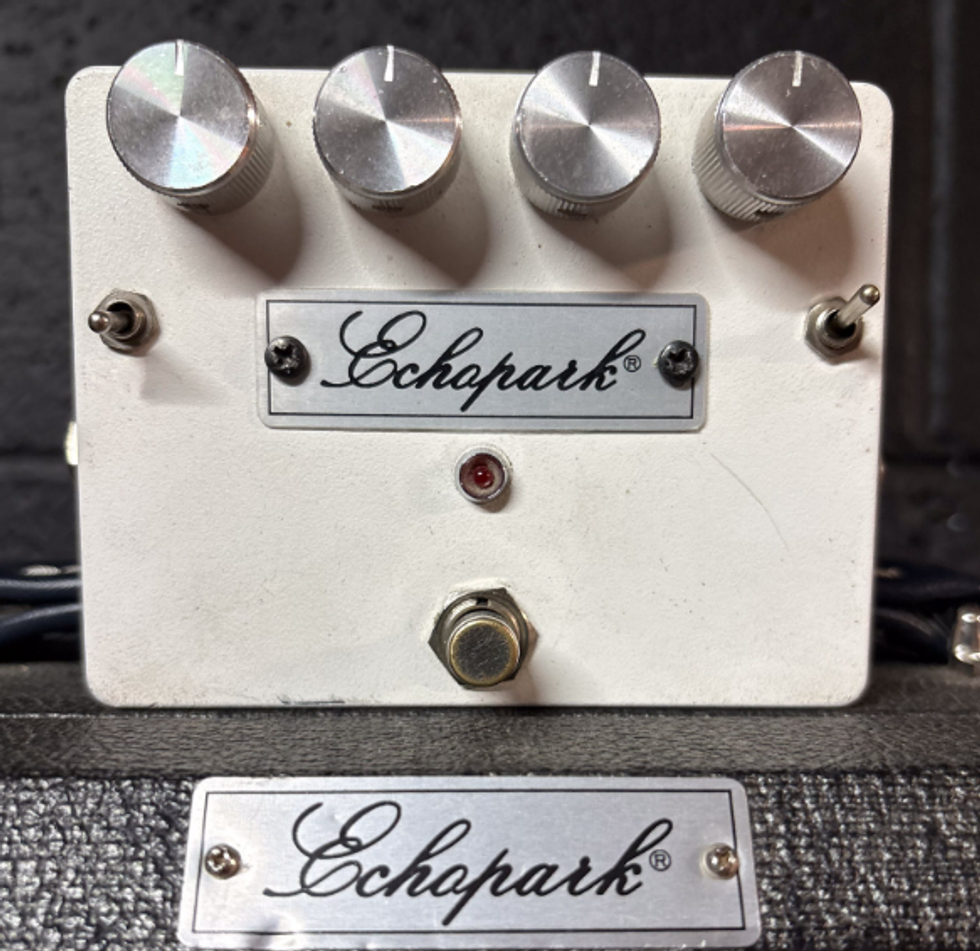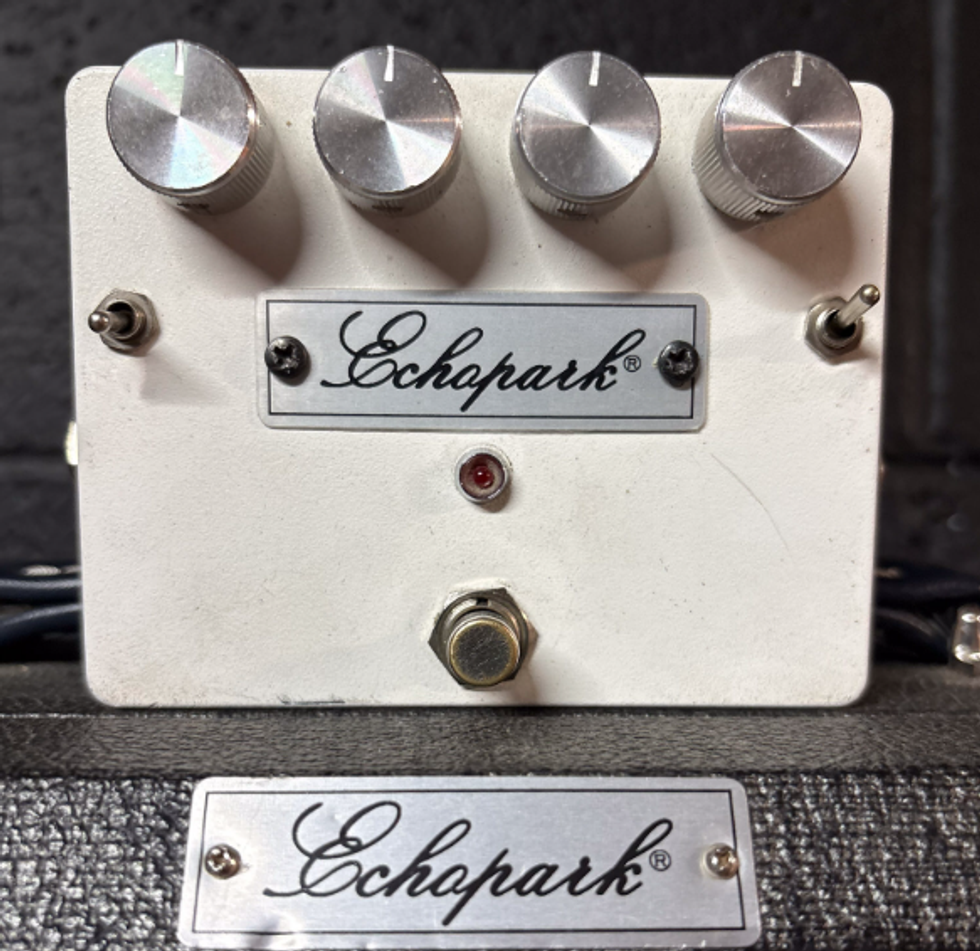RatingsPros:Reverb, delay and boost in one box. Good sounds. Easy to use. Cons: Minimal control options. Street: $259 Dunable Eidolon dunableguitars.com | Tones: Ease of Use: Build/Design: Value: |
Sometimes the features that a stompbox omits are as significant as the ones it includes. That’s certainly the case with the Eidolon, a streamlined multi-effects pedal from guitar, amp, and effect builder Sasha Dunable.
The Eidolon (it’s a classical Greek word meaning a phantom incarnation of a real person) is a collaboration between Dunable and Boston-based metal guitarist Dave Davidson (Revocation, Gargoyl). According to Dunable, Davidson was tired of schlepping separate booster, reverb, and delay pedals to burnish his single-note solos. The Eidolon was conceived as a one-box solution.
The Eidolon employs the ubiquitous Spin FV-1 chip, also used in a large percentage of current reverb, delay, and modulation pedals. This chip permits deep and potentially unconventional programming, but Eidolon keeps it simple with just a few straight-ahead sounds and modest tone-shaping options. A single on/off footswitch activates all three effects, though you can control their levels independently.
Dark Delays
You hear the delay effect isolated at the beginning of the demo clip. It’s an attractive faux-analog tone with strong low-pass filtering. Echoes start dark and get darker as on a bucket-brigade delay, though you don’t encounter the distinctive distortion of analog BBD chips. The tone is a fine choice for aggressive single-note solos. Lacking crisp treble frequencies, it sits tidily behind the dry signal without compromising rhythm or note attack. The controls are basic: delay time, delay feedback, and wet/dry mix. The mix maxes out at 50/50 wet/dry. The feedback range is also limited: maximum settings produce about a dozen repeats. (Sorry, noisemakers. There’s no way to spiral into self-oscillating feedback.) There’s a dedicated tap-tempo switch and a flashing LED to indicate the current delay time.
The delay has no tone-shaping tools other than a simple “mod” switch, which adds a chorus effect to the delays (as heard at 00:19 in the demo clip). You can’t adjust the modulation parameters, but it’s a nice sound that can add subtle thickening and animation behind the dry signal. (Is the mod switch mounted upside-down, though? The modulation appears when you move the switch away from the enclosure’s “MOD” label.)
Your Basic Boost
A single knob sets the level for a clean boost with a +20 dB range. It’s a quiet, uncolored circuit, but, of course, how “clean” the results are depends on your pickups and amp setting. At the demo clip’s 00:37 point, I play a short phrase with the Eidolon bypassed, and then I repeat the phrase with maximum boost engaged. With my vintage-output pickup and small Carr combo amp set to a crisp, clean tone, there’s enough juice to summon distortion.
Note that the boost pot can subtract as well as add. Unity gain resides at noon, and the level descends to silence when rotated counter-clockwise. You could conceivably use negative boost settings as a “clean up” effect for high-gain tones.
Vibey Verb
Two knobs regulate the reverb. One is a wet/dry mix. The other, labeled “color,” damps high frequencies while shortening the reverb time. There’s not much sonic variation, but the default settings feature the FV-1’s reverb at its best: smooth, naturalistic, and warm, as heard at 01:16 in the demo clip (with above-noon mix and color settings). The reverb, delay, and boost effects blend handsomely, especially at restrained settings.
The Eidolon lives in a standard BB-sized stompbox. The circuit board is tidy, populated by a mix of ICs and standard-sized through-hole components. Both switches employ click-less relays. The knob arrangement and color-coding make a simple control process even simpler. The Eidolon runs on standard 9V power supplies (adapter not included) and has no battery compartment.
The Verdict
There’s nothing tricky about the Eidolon. It’s a potent clean-booster with basic but effective delay and reverberation. With very specific and limited ranges in some controls and straightforward sounds, it’s probably not the best choice for sonic explorers. But the Eidolon aces its stated mission of boosting and fattening solo tones with a single foot tap. Like co-creator Dave Davidson, some players may find that this simple pedal replaces a trio of specialized stompboxes.
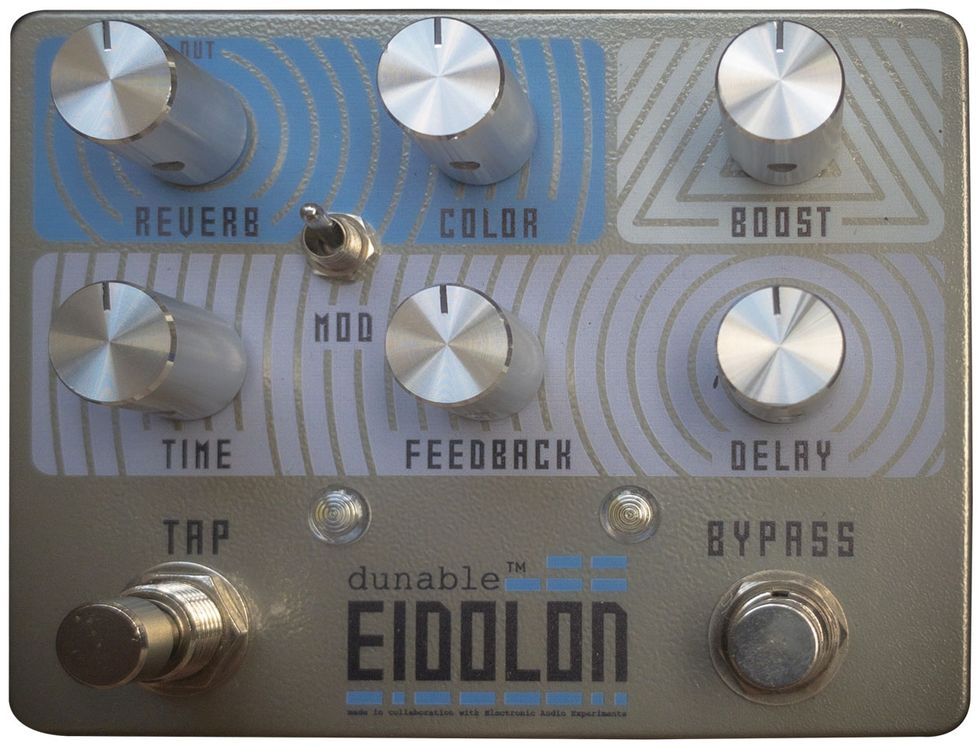














![Rig Rundown: AFI [2025]](https://www.premierguitar.com/media-library/youtube.jpg?id=62064741&width=1245&height=700&quality=70&coordinates=0%2C0%2C0%2C0)












 Shop Scott's Rig
Shop Scott's Rig
